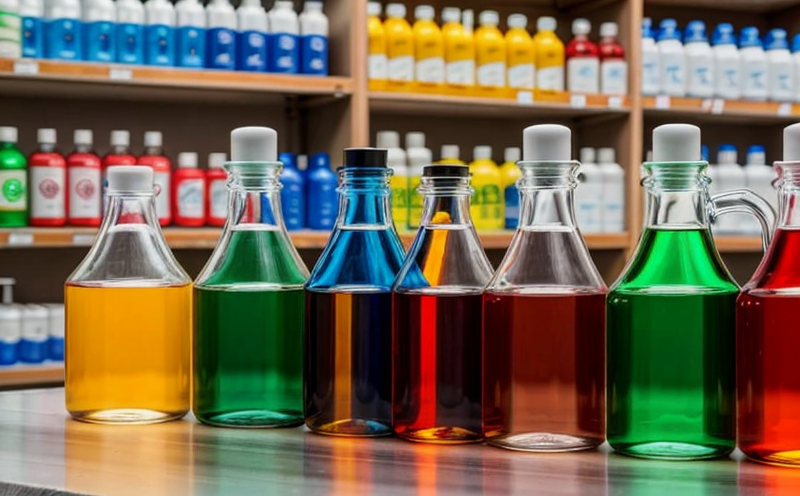ISO 14362-1 Detection of aromatic amines in textiles by GC MS
The detection and quantification of aromatic amines in textile products is essential to ensure compliance with stringent global regulations, such as REACH (Registration, Evaluation, Authorization, and Restriction of Chemicals) Directive. The ISO 14362-1 standard provides a method for the analysis of aromatic amines using gas chromatography-mass spectrometry (GC MS), which is recognized for its high sensitivity and selectivity.
The use of aromatic amines in textiles can lead to the formation of carcinogenic, mutagenic, or reprotoxic compounds when exposed to the skin. The ISO 14362-1 standard specifically targets the identification of aromatic amines that are classified as category 1B under REACH, which includes benzidine derivatives, o-toluidine, and others.
Our laboratory adheres strictly to this international standard for accurate testing of textiles. The process involves several critical steps: sample preparation, extraction of the aromatic amines using a solvent, derivatization if necessary, and finally, injection into the GC MS instrument for analysis. This comprehensive approach ensures that even trace amounts of these compounds are detected.
The instrumentation used in our laboratory is state-of-the-art, equipped with advanced GC MS systems that provide precise and reliable results. Our technicians are trained to handle the complex analytical procedures required by this standard, ensuring accurate identification and quantification of aromatic amines in textiles.
A detailed report is generated for each sample tested, outlining the specific aromatic amines detected along with their concentrations. This information is crucial for manufacturers and suppliers who need to ensure compliance with various regulatory requirements and market standards.
The results from our ISO 14362-1 analysis are widely accepted by international regulators and buyers, thereby enhancing the credibility of your products in global markets. Our service not only aids in meeting regulatory obligations but also supports ongoing research and development efforts to improve product safety and sustainability.
By partnering with us for ISO 14362-1 testing, you gain access to cutting-edge technology and expertise that can help maintain a competitive edge in an increasingly regulated market. Our commitment to precision and reliability ensures that your products meet the highest standards of quality and compliance.
Why It Matters
The detection and quantification of aromatic amines in textiles is not just about regulatory compliance; it’s also about protecting public health and ensuring product safety. Aromatic amines can form carcinogenic compounds when they come into prolonged contact with the skin, posing significant risks to consumers. By adhering to ISO 14362-1 standards, manufacturers can demonstrate their commitment to producing safe and compliant products.
The international recognition of this standard ensures that results obtained from our laboratory are accepted worldwide, facilitating smoother trade between countries. This acceptance is crucial for businesses operating in a global market where regulatory requirements can vary significantly from one region to another.
Moreover, compliance with ISO 14362-1 helps organizations avoid potential legal issues and costly recalls. It also enhances brand reputation by assuring customers of the safety and quality of their products. In today’s highly competitive market, maintaining a strong regulatory compliance posture is vital for long-term success.
Our service plays an integral role in supporting your organization’s sustainability initiatives. By ensuring that no harmful aromatic amines are present in your textiles, we contribute to reducing the environmental impact associated with non-compliant products. This aligns perfectly with broader corporate goals aimed at promoting eco-friendly practices and responsible production.
In summary, ISO 14362-1 testing is essential for any textile manufacturer or supplier who wants to ensure their products meet the highest safety standards. It provides peace of mind knowing that you are doing your part in safeguarding public health while maintaining a competitive edge in the market.
Scope and Methodology
The ISO 14362-1 standard covers the detection and quantification of aromatic amines present in textile products by using gas chromatography-mass spectrometry (GC MS). This method is particularly suited for identifying low concentrations of these compounds, which may not be detectable through other means.
The scope includes but is not limited to cotton, wool, silk, synthetic fibers, and blends thereof. It also encompasses various types of textile articles such as clothing items, upholstery fabrics, and industrial textiles.
For the testing process, samples are first prepared by cutting them into small pieces. These samples are then extracted using appropriate solvents based on the type of fabric and expected contaminants. Derivatization might be required depending upon the specific amines being targeted; however, this step is optional unless specified in the particular application.
The extracts obtained from the previous steps undergo clean-up procedures to remove interfering substances before being injected into the GC MS instrument for analysis. The instrument separates the components of the extract according to their retention times while mass spectrometry identifies each component via its molecular weight and fragmentation pattern.
Quantitative data is derived by comparing peak areas obtained during the separation process with calibration curves prepared previously using known concentrations of reference standards. Reporting involves providing a comprehensive summary including all detected aromatic amines along with their respective measured levels expressed in parts per million (ppm).
International Acceptance and Recognition
- The results from ISO 14362-1 testing are accepted by numerous countries including the European Union, United States, Japan, China, Australia, and New Zealand.
- Many international organizations like the International Organization for Standardization (ISO) recognize this standard as a benchmark for textile safety.
- Certification bodies worldwide rely on these tests to assess whether textiles meet specific safety criteria.





